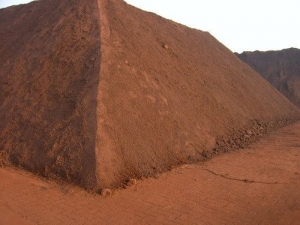


(Posted on 31/07/19)
Vale iron ore fines production and sales showed a substantial improvement in the end of 2Q19 with the increase in shipments in the Northern System and the resumption of Brucutu operations. The combined effects of both events will be felt more considerably in 2H19.
Iron ore fines production totaled 64.1 Mt in 2Q19, 12.1% and 33.8% lower than 1Q19 and 2Q18, respectively, mainly as a result of the impacts following the Brumadinho dam rupture and the unusual weather-related conditions in the Northern System in April and early May.
As a result of the successful S11D ramp-up, the Northern System achieved a run rate of 215 Mtpy in June and expects to produce around 18.5 Mt to 19.0 Mt per month in 2H19 reaching the 230 Mtpy run rate.
Vale's pellet production[2] totaled 9.1 Mt, 25.5% and 29.3% lower than in 1Q19 and 2Q18, respectively, mainly due to the full stoppage of the Southern System pellet plants during the quarter, following the Brumadinho dam rupture, abnormal rain in the Northern and Southeastern Systems as well as maintenance carried out and at the Tubarão plants.
Vale made substantial progress concerning the 93 Mtpy of Iron Ore production capacity stopped in 1Q19, with the resumption of Brucutu operations on June 22nd, recovering 30 Mtpy of production capacity. Regarding the 60 Mtpy currently curbed, Vale expects that the 30 Mtpy of dry processing production will be gradually resumed starting by the end of this year and the remaining 30 Mtpy, which includes wet processing, is estimated to return in about two to three years.
Iron ore fines and pellet sales volume was 70.8 Mt in 2Q19, 4.5% higher than in 1Q19 and 18.2% lower than 2Q18. Although the production volumes decreased quarter over quarter, sales volumes increased 3.2 Mt due to the consumption of offshore inventories.
As a result of the Brucutu mine restart, Vale reaffirms its 2019 iron ore and pellets sales guidance of 307-332 Mt, as previously announced, and informs that its expected sales volume will move towards the midpoint of the range.
Following the Brumadinho accident, there was a shortage of products to be loaded in the Southern and Southeastern Systems, and therefore a major share of scheduled vessels was redirected to the Ponta da Madeira port in the Northern System. However, the heavy rains in March, April and early May impacted port productivity and loading operations. Therefore, the line-up of ships at the Ponta da Madeira port increased substantially and the consequence was a considerable impact on demurrage costs in 2Q19, thus impacting the C1 cash costs. The São Luís port stay of the ship went from 6 days in January to the peak level of 32 days in May. The issue is being normalized with the July estimate for port stay of the ship at 7 days.
ADM and Bayer have announced a three-year extension of their partnership to support farmers in Maharashtra... Read more
The National Grain and Feed Association (NGFA) has applauded Senator Deb. Fischer’s (R-Neb.) reintroduction... Read more
Anglo American plc and Teck Resources Limited have received regulatory approval from the Government... Read more
The Rhodes Ridge Joint Venture has approved a $191 million (A$294 million) (Rio Tinto share $96 million... Read more
Trafigura Group Pte Ltd, a global leader in the commodities industry, has announced its financial results... Read more
Rio Tinto has successfully produced the first copper from the Johnson Camp mine in Arizona using its... Read more
The American Soybean Association’s World Initiative for Soy in Human Health programme and the... Read more
Karlka Nyiyaparli Aboriginal Corporation (KNAC) Registered Native Title Body Corporate and Rio Tinto... Read more
OCI Global, a leading global producer and distributor of nitrogen products has announced that it has... Read more
In December 2024, SSAB was granted a permit by the Land and Environment Court at Umeå District... Read more